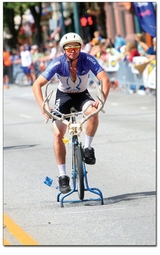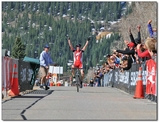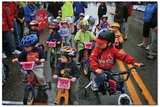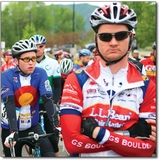
It’s that extra special time of year when a marvelous diversity of cyclists migrate right into our very own town. With countless species to observe, it’s easy for the unseasoned cyclist watcher to become overwhelmed. However, with a sharp eye, or some handy binoculars, one can quickly identify these terrific and bizarre creatures using the “four keys” for visual identification:
1. Size and Shape (i.e. tall and gangly)
2.Color Pattern (i.e. bright, sometimes sparkling)
3. Behavior (i.e. shaving body parts, ingesting various gels)
4. Habitat (i.e. roads, trails, suburban neighborhoods)
With that in mind, here’s a look at a few commonly seen Iron Horse cyclists, so you know just what you’re looking at ...
1. Size and Shape (i.e. tall and gangly)
2.Color Pattern (i.e. bright, sometimes sparkling)
3. Behavior (i.e. shaving body parts, ingesting various gels)
4. Habitat (i.e. roads, trails, suburban neighborhoods)
With that in mind, here’s a look at a few commonly seen Iron Horse cyclists, so you know just what you’re looking at ...
-

- Susceptible to predators and cars, meet the Lesser Pointed Stationary.
-

- You should be so lucky to sight a Red Ned in his natural habitat.
-

- The elusive One Wheeled Stilt.
-

- A flamboyant pair of Southwestern Pinks.
-

- Young fledglings of various species gather to leave the nest
-

- Native to the Front Range, The Common Spandex.
-

- Colorado Baldies are typically seen riding circles in front of crowds.
In this week's issue...
- December 18, 2025
- Let it snow
Although ski areas across the West have taken a hit, there’s still hope
- December 18, 2025
- Look, but don't take
Lessons in pottery theft – and remorse – from SW Colorado
- December 11, 2025
- Big plans
Whole Foods, 270 apartments could be coming to Durango Mall parcel
